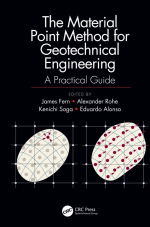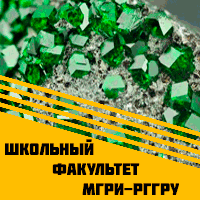Добрый день, Коллеги. Важное сообщение, просьба принять участие. Музей Ферсмана ищет помощь для реставрационных работ в помещении. Подробности по ссылке
The material point method for geotechnical engineering. A practical guide / Метод материальной точки для геотехнического проектирования. Практическое руководство
Geotechnical engineering differs from other forms of engineering by the composition of ground, which is composed of a wide range of solids with discontinuities, pores fluids and structures. These different elements composing the ground interact with one another increasing the complexity of any prediction. In traditional geotechnical analysis, limit equilibrium methods (LEM) are useful techniques for estimating the onset of failure. However, these simple methods cannot provide any information on the deformation and are unable to simulate the real soil behaviour. Other well-established methods, such as the Finite Element Method (FEM), can model complex geometries and soil behaviours. However, FEM is limited to small deformation analyses and cannot model post-failure behaviours. New numerical methods are being developed in order to provide an engineering tool capable of simulating the entire instability process from the static stability analysis at small deformation to the dynamic post-failure run-out behaviour. This is the case of the material point method (MPM). MPM has been applied to a number of geotechnical problems and it has been extended to solve coupled flow-deformation problems in saturated conditions as it can simultaneously model fluid-like and solid-like behaviours. Fig. 1 depicts different applications of MPM in geotechnical engineering. <...>




